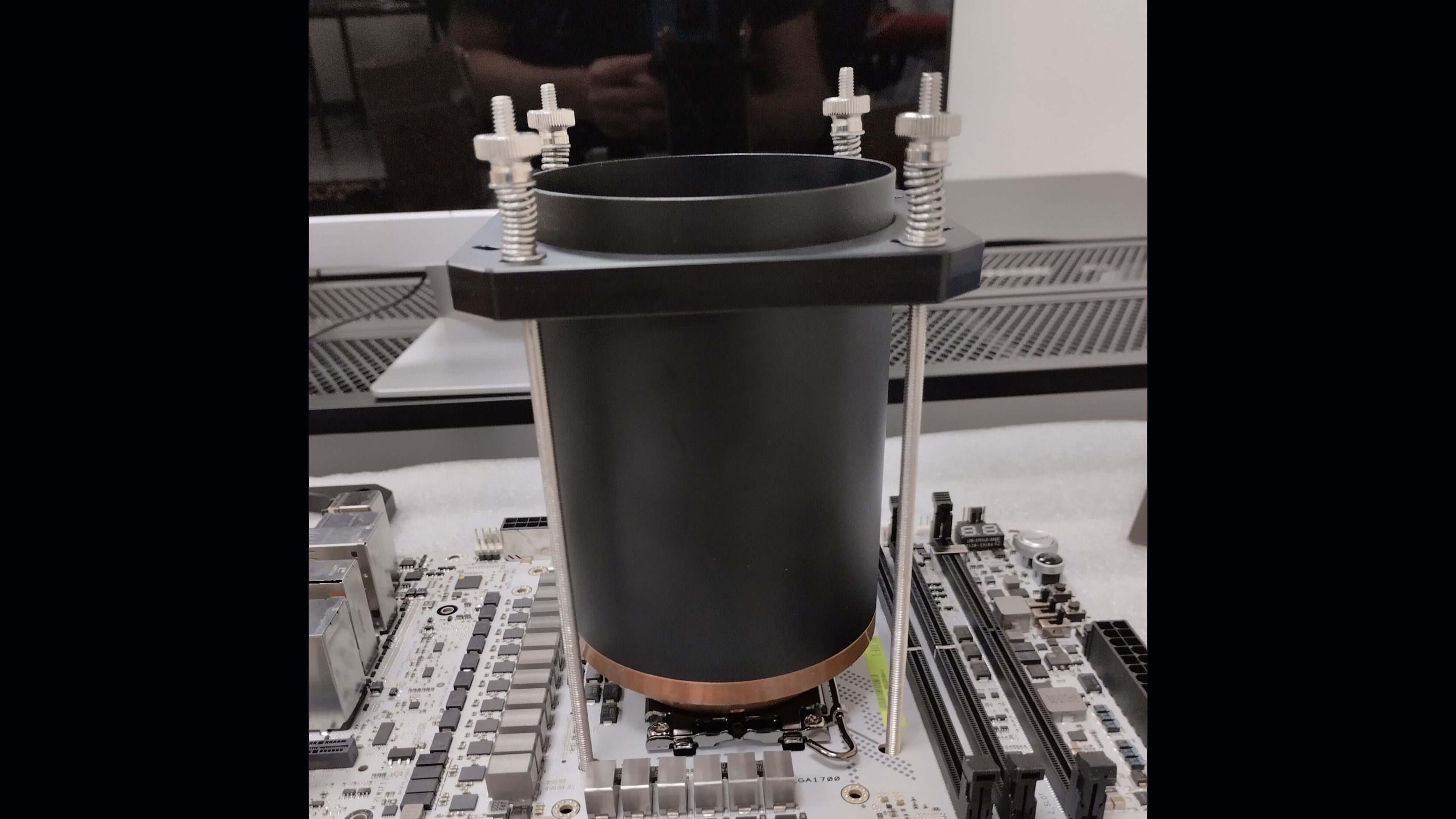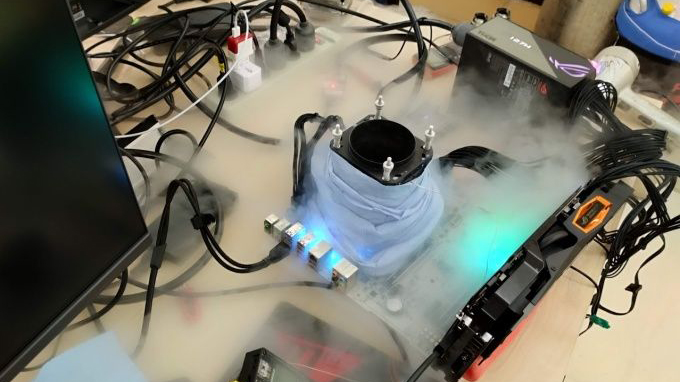Soon You'll Be Able To Buy Your Own 9 GHz Record Breaking LN2 Pot
The LN2 pot that was used to break the 9GHz clock speed
According to a report from hardwareLuxx, Raptor Lake's 9GHz world record was achieved using a brand new LN2 pot named the Volcano, and from January 5 you'll be able to buy your own from EmorLabs for $250.
Volcano was developed by overclocker ShaggySVK and supports a combination of liquid nitrogen (LN2) and liquid helium cooling, not just liquid nitrogen. The pot itself features a matte black finish container measuring 83.1mm paired with a full copper core at the bottom. It supports almost every single CPU socket from Intel and AMD, including AM2 all the way to AM5, and LGA 775 all the way to the LGA 20xx sockets found in Intel's HEDT chips. We don't have all the dimensions of the pot itself, but it stands tall, approximately the height of a 100mm or 120mm tower cooler.



To maximize the effective cooling, the copper core features a plethora of holes and dimples for the cooling liquid to saturate. These holes extend all the way through the
copper core, with the exception of the bottom where the surface is flat to make maximum contact with the CPU. Again, the pot is capable of utilizing both liquid nitrogen and liquid helium cooling at the same time.
Liquid helium is a more aggressive cooling solution compared to liquid nitrogen, with extreme thermal properties producing a lower temperature. When used correctly in an overclocking application, it can drop CPU temperatures even further than what liquid nitrogen alone is capable of.
This is how the Raptor Lake world record was broken. Asus' team of overclockers used a combination of liquid nitrogen and liquid helium to push the 13900K to 9GHz. To add, one of the overclocks that helped break the record said Raptor Lake was one of the most stable chips he had seen under liquid helium.
Once the Volcano is available for purchase, it will come as a bundle that includes a variety of accessories, including mounting brackets, screws, springs, washers, sandpaper, and more.
Get Tom's Hardware's best news and in-depth reviews, straight to your inbox.

Aaron Klotz is a contributing writer for Tom’s Hardware, covering news related to computer hardware such as CPUs, and graphics cards.
-
TechieTwo ReplyAndrewJacksonZA said:My 286 will beat you to it!! :)
I've got a 3 MHz head start on your i286. Ha! -
AndrewJacksonZA Reply
That will make my victory all the sweeter!! ;-)TechieTwo said:I've got a 3 MHz head start on your i286. Ha! -
RichardtST Well, this is just dumb. Why bother with a solid copper base and still have to suffer though a layer of paste and a lid to get to the hot parts? De-lid that cpu, remove the bottom of the cup, and make a custom-shaped seal to fit around the naked chip. LNO2 goes directly onto the die where it can do the most good. If you're gonna do it, don't be doing it half-way.Reply -
Vanderlindemedia ReplyRichardtST said:Well, this is just dumb. Why bother with a solid copper base and still have to suffer though a layer of paste and a lid to get to the hot parts? De-lid that cpu, remove the bottom of the cup, and make a custom-shaped seal to fit around the naked chip. LNO2 goes directly onto the die where it can do the most good. If you're gonna do it, don't be doing it half-way.
The way you describe would mean that the CPU packaging would simply crack. And you would have no CPU to OC.
Your going -250 degrees here. It will 100% shrink the materials used. -
AndrewJacksonZA Reply
I guess you've broken 9GHz already, then?RichardtST said:Well, this is just dumb. Why bother with a solid copper base and still have to suffer though a layer of paste and a lid to get to the hot parts? De-lid that cpu, remove the bottom of the cup, and make a custom-shaped seal to fit around the naked chip. LNO2 goes directly onto the die where it can do the most good. If you're gonna do it, don't be doing it half-way.